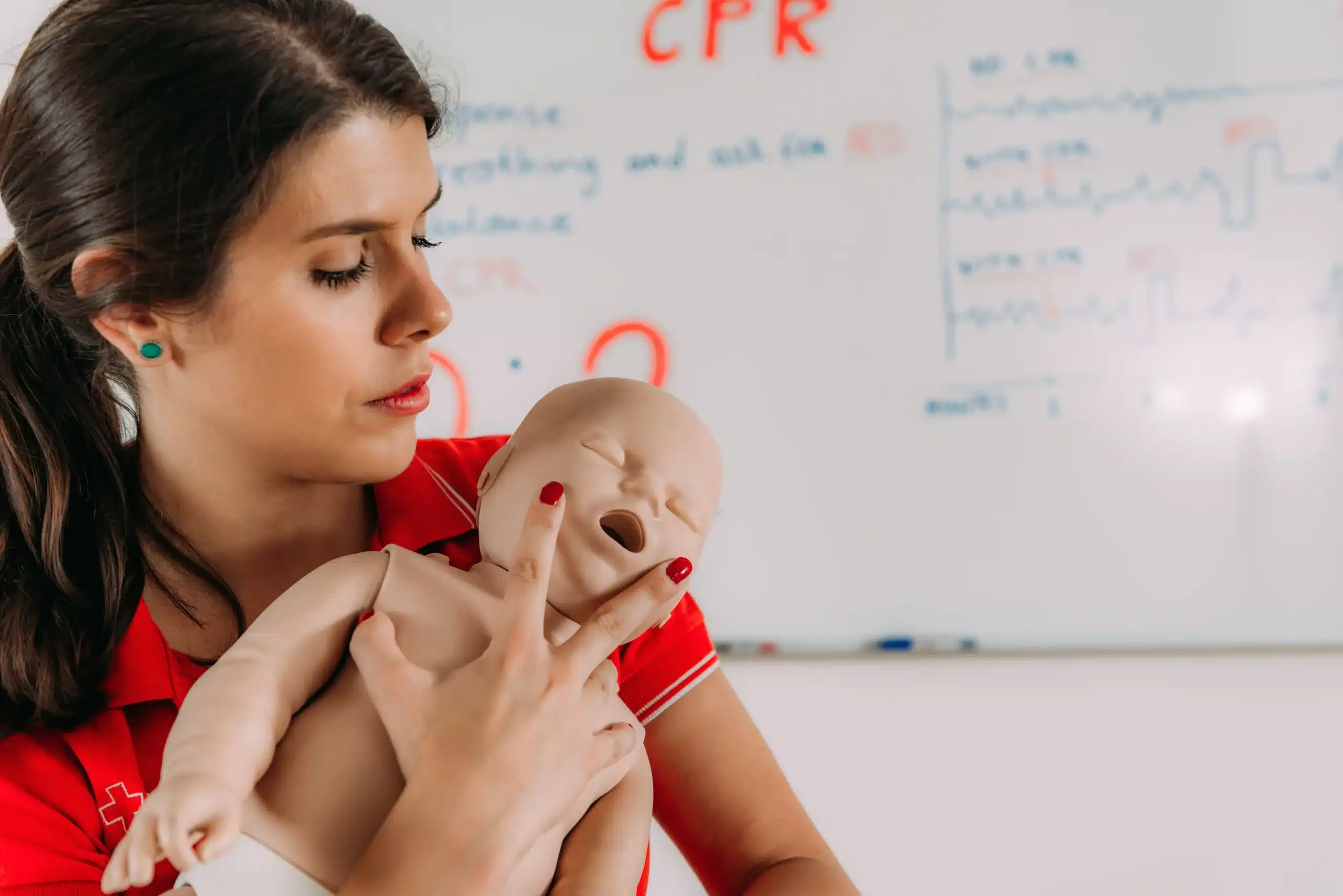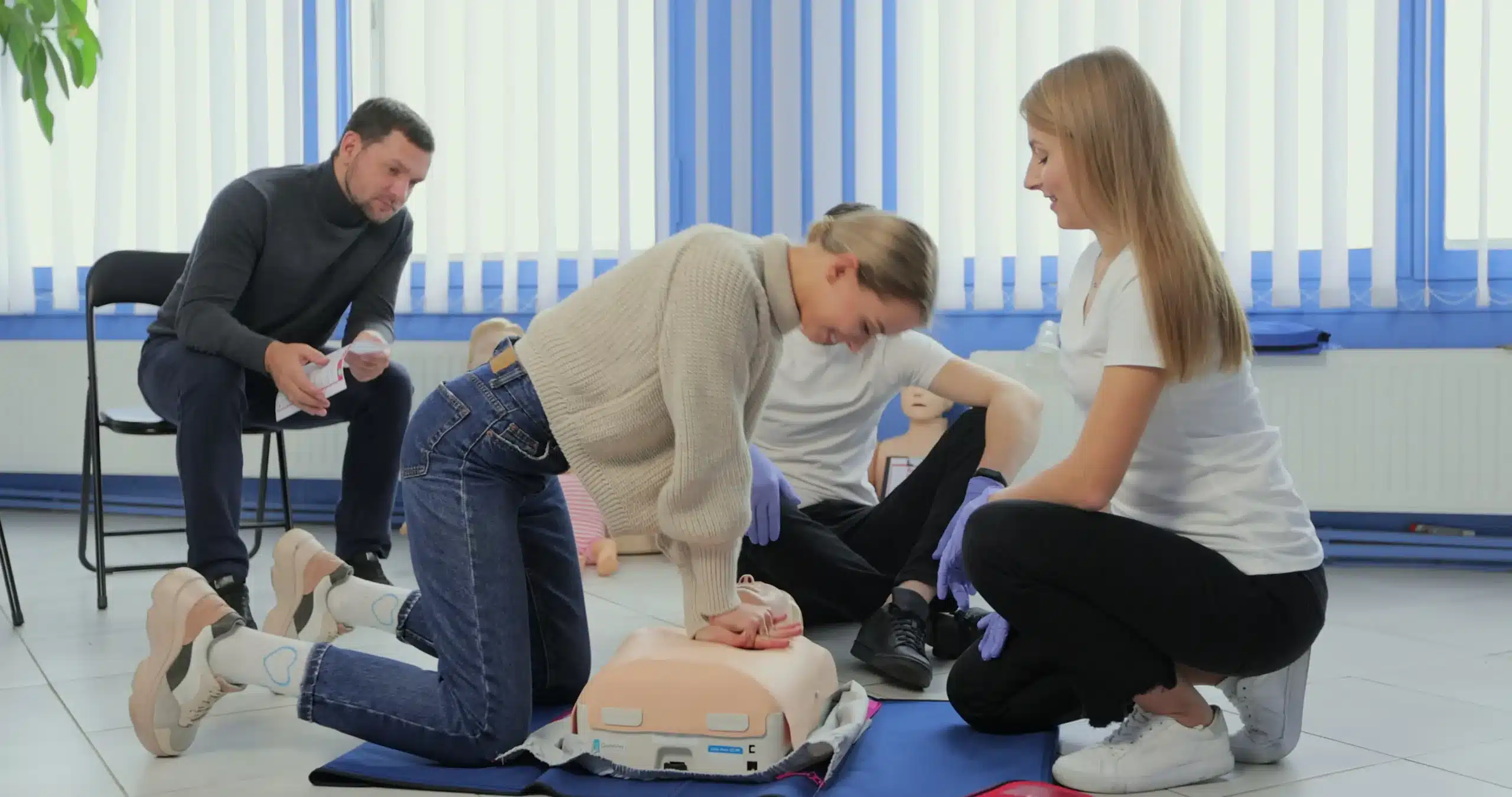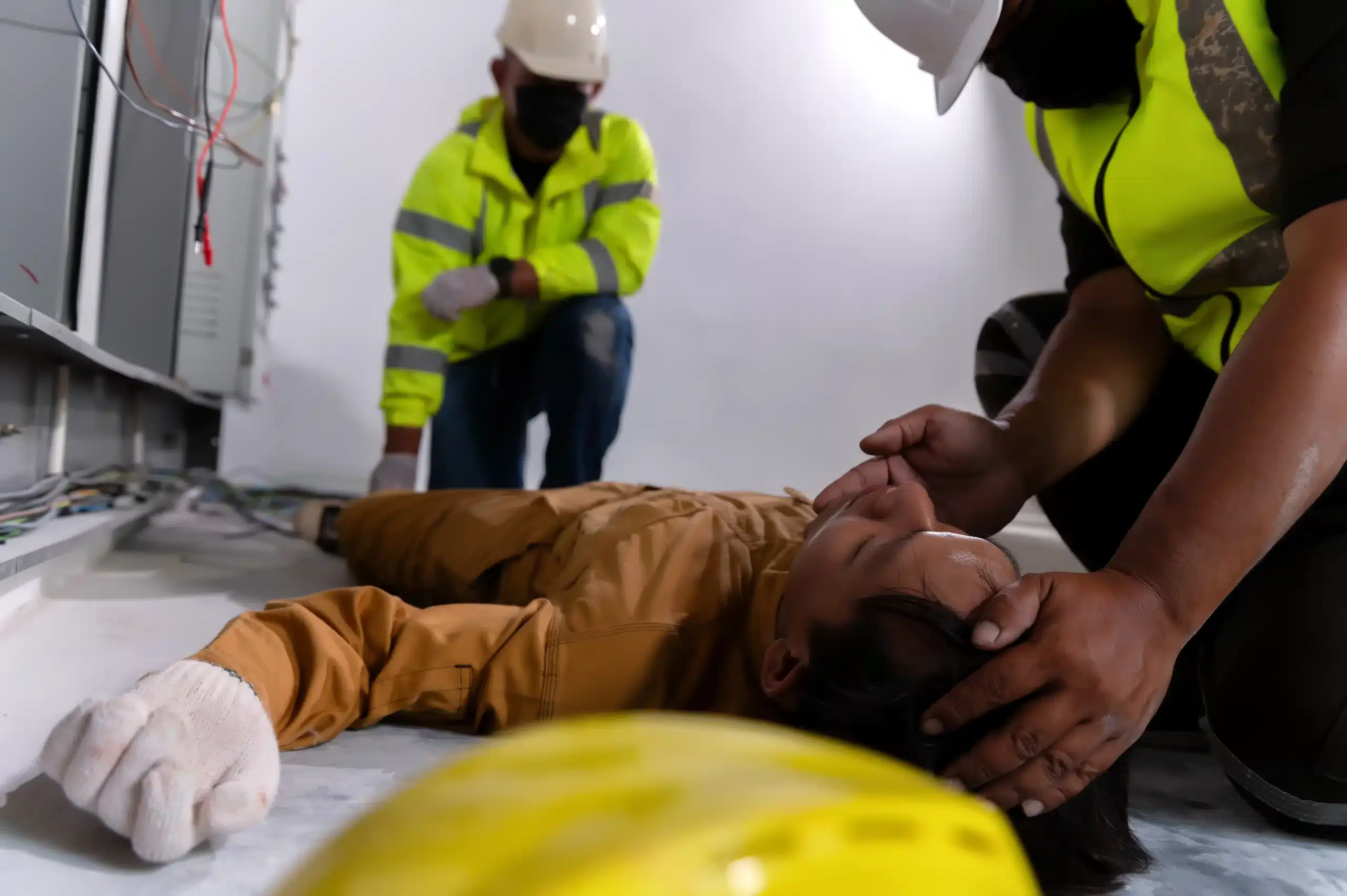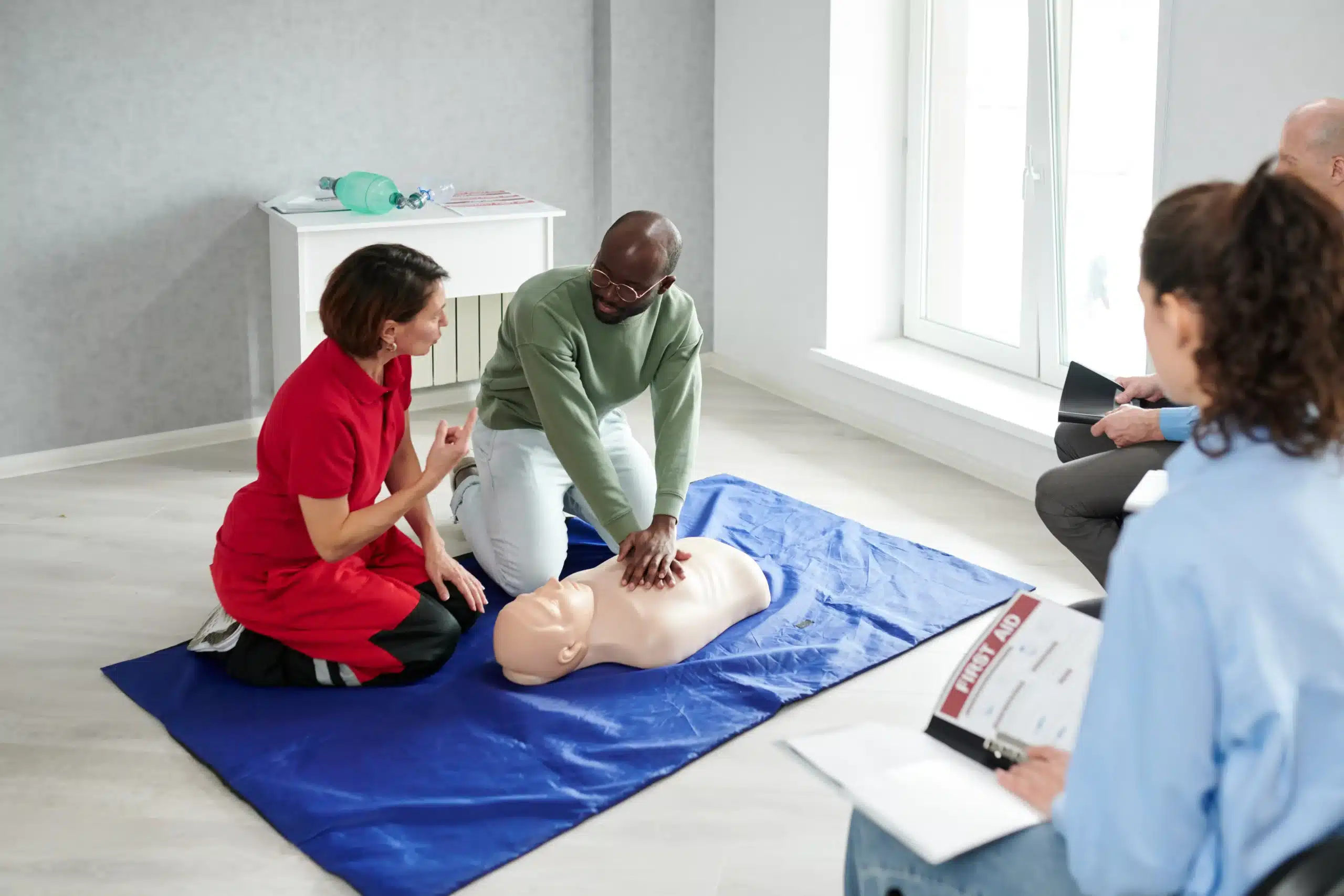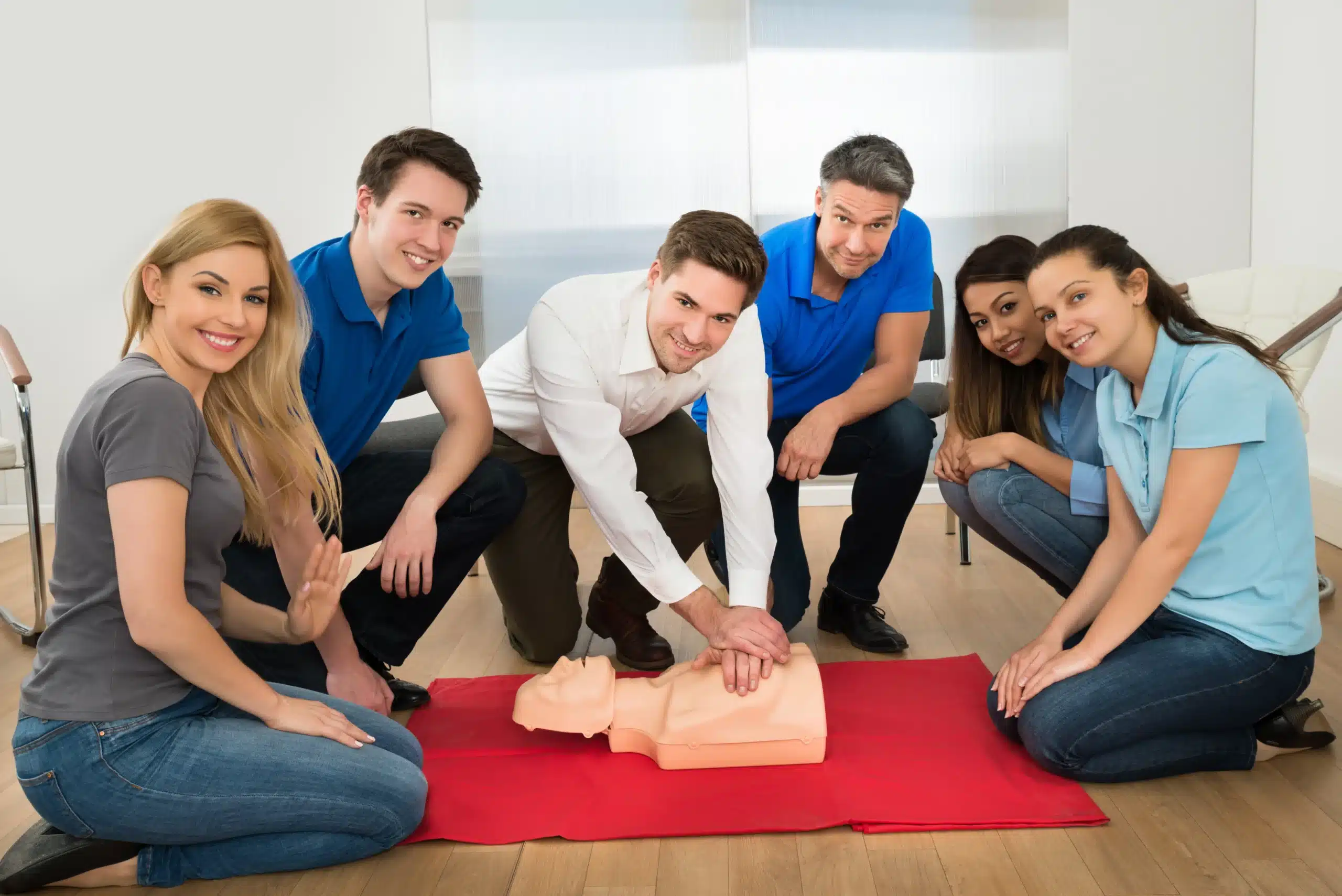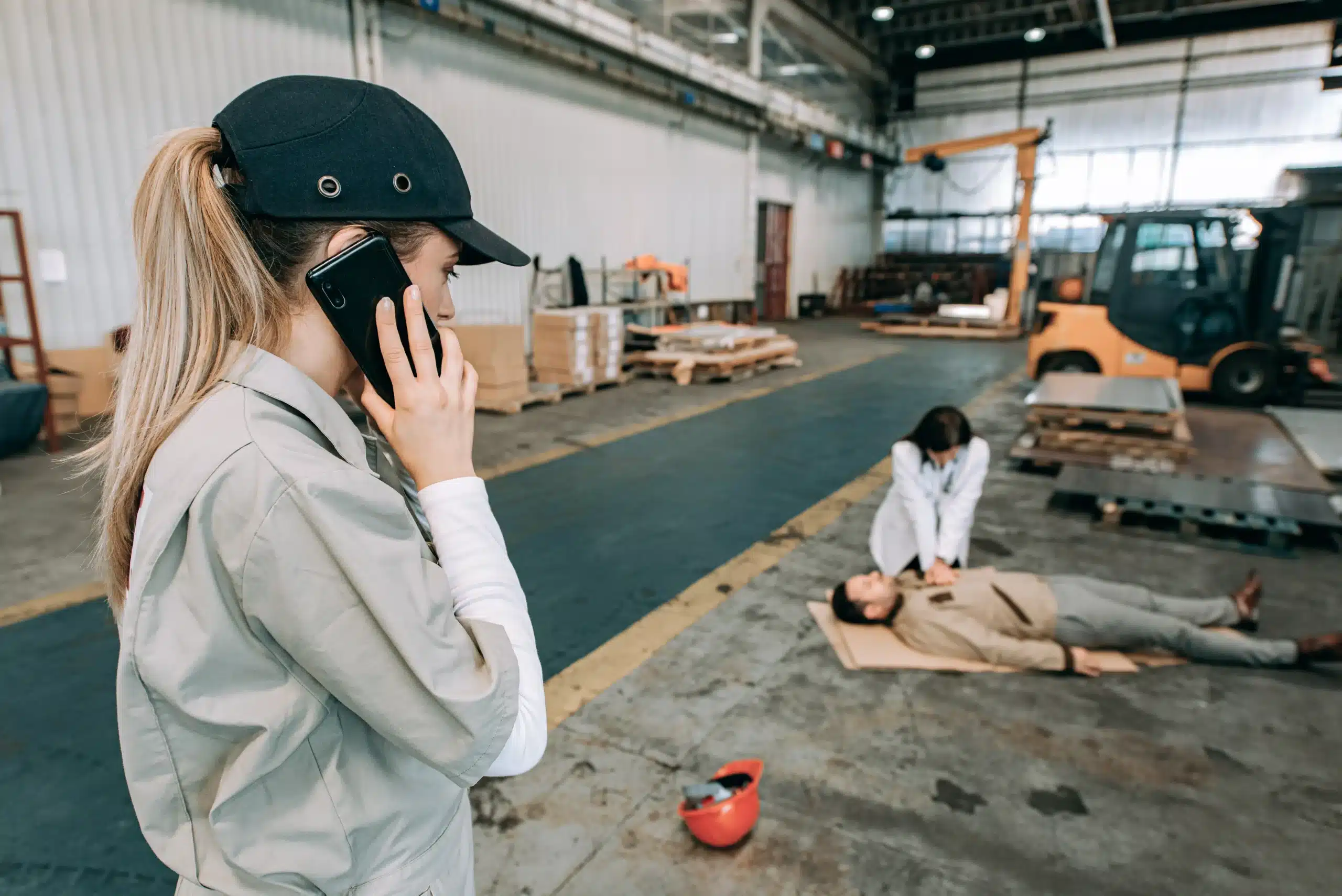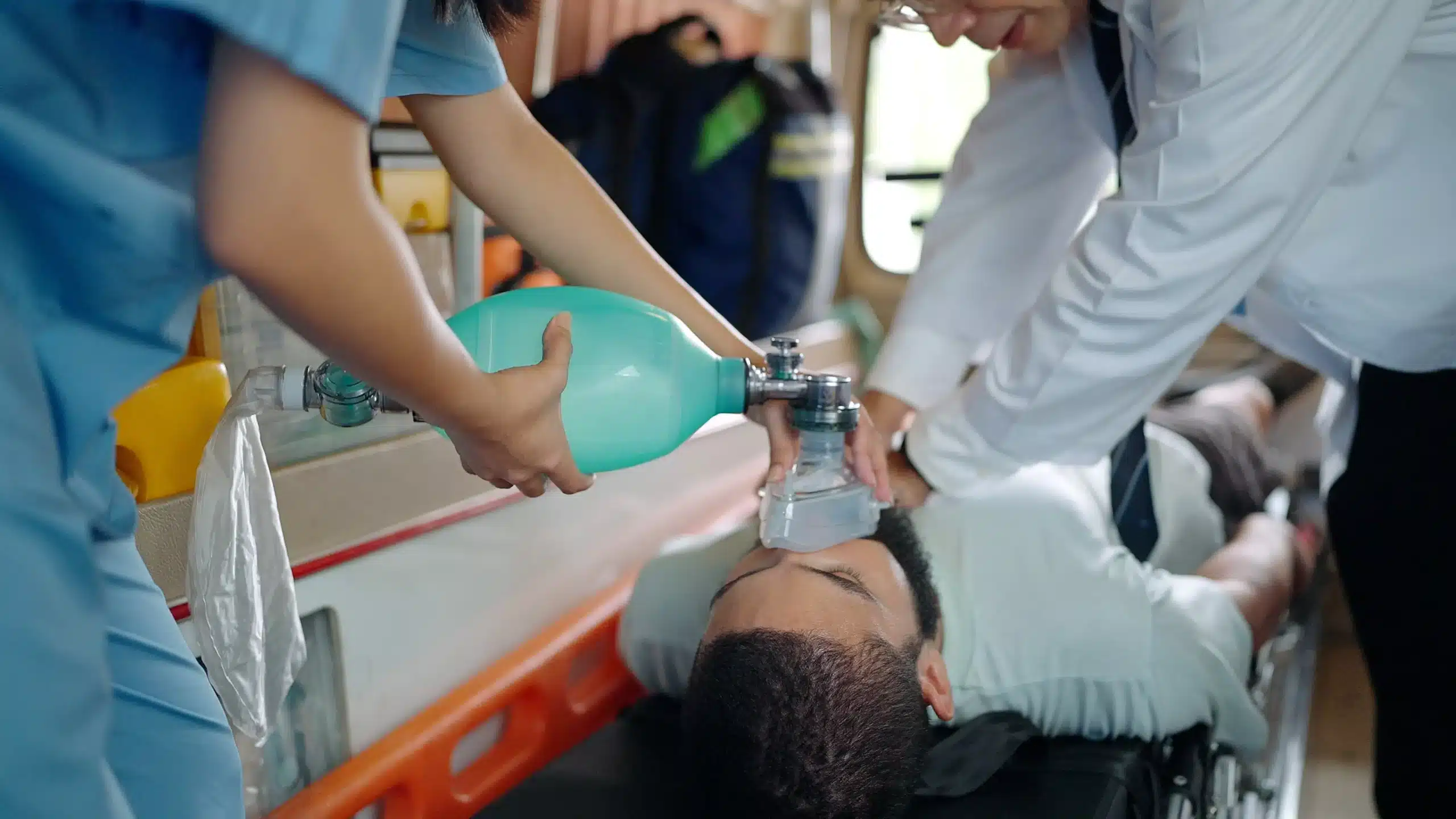Empowering yourself with life-saving skills is one of the most valuable things you can do. BLS training provides you with the knowledge and hands-on practice to respond effectively in medical emergencies. From cardiac arrest to choking, BLS equips you to provide critical care until professional help arrives. This guide will explore the core components of BLS training, including CPR, AED use, and airway management techniques. We’ll also discuss the benefits of BLS certification, address common misconceptions, and help you find “BLS training near me” to start your journey toward becoming a confident first responder.
Key Takeaways
- BLS equips you for emergencies: Learn essential skills like CPR, AED use, and airway management to confidently respond to medical situations. Explore in-person, online, or blended learning formats to fit your lifestyle.
- Finding the right BLS course is key: Prioritize AHA-certified providers, consider cost and class size, and check reviews. Ask about group discounts for added value. CPR Classes Oakland offers convenient training in the Bay Area.
- Your BLS certification journey continues after training: Renew your certification every two years and stay updated on the latest guidelines. These skills can open doors personally and professionally.
What is BLS Training & Why Do You Need It?
Basic Life Support (BLS) training gives you the skills to respond to medical emergencies. It equips you with the knowledge and practice to provide immediate care until professional medical help arrives. Think of it as the crucial first line of defense in a crisis. BLS training empowers you to confidently assist individuals experiencing cardiac arrest, respiratory distress, or choking. It’s about being prepared to make a real difference when every second counts. BLS training provides essential life-saving skills, from CPR and AED use to airway management.
BLS Skills
BLS training covers core life-saving skills, including CPR for adults, children, and infants. You’ll learn how to use an AED and provide care for choking victims of all ages. The curriculum often uses scenario-based learning to build your critical thinking and problem-solving skills under pressure. This hands-on approach helps you develop the muscle memory and quick decision-making needed in real emergencies. Beyond the technical skills, BLS training also emphasizes teamwork and communication, essential components of effective emergency response. It also covers the most common mistakes in BLS training so you can avoid them.
Who Needs BLS & Why?
While often associated with healthcare professionals, BLS certification is valuable for a wide range of professions. Most medical facilities require BLS certification for nurses. But it’s also beneficial for teachers, coaches, lifeguards, childcare providers, and anyone who wants to be prepared for unexpected medical situations. Even if not mandated by your job, having BLS training can provide peace of mind, knowing you can step in when needed. It’s a portable skillset applicable in various settings, from the workplace to the home. BLS certification is useful for people in a variety of professions.
BLS Training Myths
One common misconception is that BLS training is exclusively for medical professionals. This isn’t true. Anyone can benefit from BLS training, regardless of their background. Another myth is that BLS only covers CPR. In reality, BLS certification training includes AED use, basic airway management, and techniques for assisting choking victims. It’s a comprehensive approach to emergency care, equipping you with a broader skillset than just CPR alone.
Find BLS Training Near You
Finding the right BLS training program involves understanding your options and choosing a provider that fits your needs and location. Let’s explore the different avenues you can take to become BLS certified.
Safety Training Seminars: Your Oakland Option
If you’re in the Oakland area, Safety Training Seminars offers BLS certification along with other American Heart Association (AHA) courses like ACLS and PALS. They provide a convenient way to get all your certifications in one place, serving Oakland, Alameda, and Berkeley, CA. Check out their website for more information on their low price guarantee and group discounts.
Other Local Training Centers
Beyond Safety Training Seminars, your local area likely has other training centers and hospitals offering BLS certification. A quick online search for “BLS training near me” will turn up a variety of options. Community colleges, fire departments, and recreation centers often host BLS courses as well.
Online BLS Training
Online BLS certification has become increasingly popular, offering flexibility for those with busy schedules. These courses often combine online learning modules with in-person skills sessions, allowing you to learn the material at your own pace and then demonstrate your skills to a certified instructor. Online BLS courses can be a great option for working professionals or those with limited access to in-person training.
Choosing a BLS Provider: What to Look For
When selecting a BLS provider, consider factors like course format (online, in-person, or blended), cost, and the training center’s reputation. Look for providers offering AHA-certified courses, as these are widely recognized and accepted. Also, consider the provider’s instructor-to-student ratio, as smaller classes can offer more personalized attention. Finally, read reviews and testimonials to get a sense of other students’ experiences. Safety Training Seminars offers a helpful guide for finding a provider.
Top BLS Training Providers
Several nationally recognized organizations offer high-quality BLS training:
American Heart Association (AHA)
The AHA is a leading provider of BLS training, known for its comprehensive curriculum and emphasis on high-quality CPR. Their courses equip learners to recognize life-threatening emergencies, perform effective chest compressions and ventilations, and use an AED.
American Red Cross
The American Red Cross also offers BLS training, with options for in-person and blended learning. Their courses are designed to meet the needs of healthcare providers and other individuals seeking BLS certification.
National CPR Foundation
The National CPR Foundation offers online BLS certification through ACLS.com, accredited by organizations like the ADA, AMA, and ANCC.
ProTrainings
ProTrainings provides a variety of online courses, including BLS, tailored to healthcare professionals.
Health & Safety Institute (HSI)
HSI offers a range of training programs, including BLS, designed for various organizations and individuals.
BLS Training: Formats & Costs
In-Person, Online, or Blended Learning?
BLS training comes in several formats, so you can choose what works best for your schedule and learning style. In-person BLS classes offer hands-on practice and direct interaction with an instructor. This is a great option if you thrive in a traditional classroom setting and benefit from face-to-face instruction. Online courses provide flexibility, allowing you to learn at your own pace from anywhere with an internet connection. This format is perfect for those with busy schedules or who prefer self-directed learning. Blended learning combines online coursework with in-person skills sessions, offering a balance of flexibility and hands-on training. Consider your learning preferences and time constraints when making your decision.
Typical Costs & What You Get
BLS class costs vary depending on the training provider, format, and materials included. In the San Francisco Bay Area, including Oakland, Berkeley, and Alameda, expect to pay somewhere between $50 and $150. In-person training often includes a student manual and certification card upon completion of the course. Online courses may or may not include physical materials, so check with the provider before registering. Our low price guarantee ensures you’re getting the best possible value for your BLS training. We’re committed to providing high-quality training at a competitive price.
Group Discounts & Deals
If you’re getting certified with a group of colleagues or friends, be sure to ask about potential discounts. Many training centers, including Safety Training Seminars, offer group discounts that can significantly reduce the per-person cost. This is a smart option for workplaces, community groups, or families who want to train together. Contact providers directly to discuss group rates and any available package deals. This can be a cost-effective way to ensure everyone gets certified.
Price vs. Quality: Getting the Best Value
While cost is a factor, don’t compromise on the quality of your training. A lower price doesn’t always translate to a better value. Consider the provider’s reputation, instructor experience, and the comprehensiveness of the course content. Look for training centers that adhere to industry standards, like those established by the American Heart Association. Prioritize excellent customer service and a seamless certification process when choosing your BLS provider. Investing in quality training ensures you receive the knowledge and skills necessary to perform BLS effectively.
What Happens in a BLS Training Course?
So, you’ve decided to get BLS certified—great! Now you’re probably wondering what to expect. A BLS training course covers the essential skills needed to respond to life-threatening situations. Let’s break down what a typical course entails:
Course Length & Structure
BLS certification courses are designed to be efficient and comprehensive. You can obtain your BLS certification in as little as 4.5 hours. However, some courses may run longer, especially those incorporating local protocols or offering more in-depth training for specific groups. The course typically blends lectures, demonstrations, and hands-on practice to ensure you grasp both the theory and practical application of BLS techniques.
Key Topics
BLS training follows the American Heart Association (AHA) guidelines and covers core life-saving skills. You’ll learn adult, child, and infant CPR, how to use an automated external defibrillator (AED), and techniques for relieving airway obstructions. The curriculum often uses scenario-based learning, which helps you develop critical thinking and problem-solving skills for real-world emergencies. For example, you might practice responding to a simulated choking incident or cardiac arrest.
Hands-on Practice & Testing
Hands-on practice is a crucial part of BLS training. You’ll have the opportunity to practice CPR and AED use on mannequins in a simulated environment. This allows you to build muscle memory and gain confidence in performing these skills under pressure. Most CPR courses include a written exam and a hands-on skills assessment to ensure you’ve mastered the techniques. Don’t worry, your instructor will guide you through the process and provide feedback to help you succeed.
Certification: Process & Validity
Upon successful completion of the course and assessments, you’ll receive your BLS certification, valid for two years. Many providers, including CPR Classes Oakland, offer refresher materials to help you maintain your skills throughout this period. Remember that a BLS certification needs to be renewed every two years to stay current with the latest guidelines and maintain your credentials. You can find more information on BLS certification renewal from various providers.
Get the Most Out of Your BLS Certification
So, you’ve earned your BLS certification—congratulations! Now, how can you make the most of this valuable credential? Whether you’re a healthcare provider, a childcare professional, or simply someone who wants to be prepared for emergencies, here’s how to maximize the impact of your BLS training.
Using BLS Skills in Real Life
BLS training equips you with essential, life-saving skills applicable in various real-world situations. From performing CPR and using an AED to managing airways, your training instills the confidence to respond effectively during medical emergencies. These skills are invaluable whether you’re a healthcare professional or someone who wants to be prepared. Knowing you can make a difference empowers you to act quickly and potentially save a life.
Renewing Your Certification
Your BLS certification is valid for two years. To maintain your skills and credentials, remember to renew your BLS certification before it expires. Many providers, including Safety Training Seminars, offer streamlined renewal courses that cover the latest guidelines and best practices. Setting reminders and scheduling your renewal in advance ensures you’re always ready to respond.
Staying Up-to-Date on BLS Guidelines
Medical best practices are constantly evolving. Staying current with the latest BLS guidelines is crucial for providing effective care. Regularly reviewing updated resources and seeking continuing education will keep your skills sharp and your knowledge aligned with current standards. This commitment to ongoing learning demonstrates your dedication to providing high-quality care.
Career Advancement with BLS
A BLS certification is often a prerequisite for many healthcare positions and can significantly enhance your career prospects. It demonstrates your commitment to patient safety and professional development. For nurses, maintaining a current BLS certification is often a requirement for employment and career advancement. Even outside of healthcare, having BLS training can make you a more valuable asset in various fields, from education to fitness.
Related Articles
- BLS Certification Alameda: The Ultimate Guide – Oakland CPR Classes
- BLS Renewal in Alameda: Your Easy Guide – Oakland CPR Classes
- BLS Certification in Oakland for Healthcare Providers – Oakland CPR Classes
- Find BLS Classes Near Me: Your Certification Guide – Oakland CPR Classes
- CPR Myths Exposed: Truth Behind Common Misconceptions
Frequently Asked Questions
Is BLS certification only for healthcare professionals? Not at all! While it’s definitely a requirement for many healthcare jobs, BLS certification is valuable for anyone who wants to be prepared for a medical emergency. Teachers, coaches, lifeguards, childcare providers, and even parents can benefit from having these skills.
What’s the difference between BLS and CPR? CPR is actually part of BLS training. BLS is more comprehensive, covering CPR, how to use an AED, and how to help someone who is choking. It gives you a broader skillset for responding to emergencies.
How long does it take to get BLS certified? You can get certified pretty quickly. Most BLS courses take just a single day – about 4.5 hours. Some courses might be a bit longer if they cover specific local protocols or go into more detail for certain professions.
How much does BLS training cost? The cost varies depending on where you take the course and whether it’s online or in-person. In the Oakland area, you can expect to pay somewhere between $50 and $150. It’s always a good idea to check with different providers for their pricing and see if they offer any group discounts.
How often do I need to renew my BLS certification? BLS certifications are typically valid for two years. To keep your skills current and your certification active, you’ll need to take a refresher course every two years. Many providers offer renewal courses that get you up to speed with the latest guidelines.


